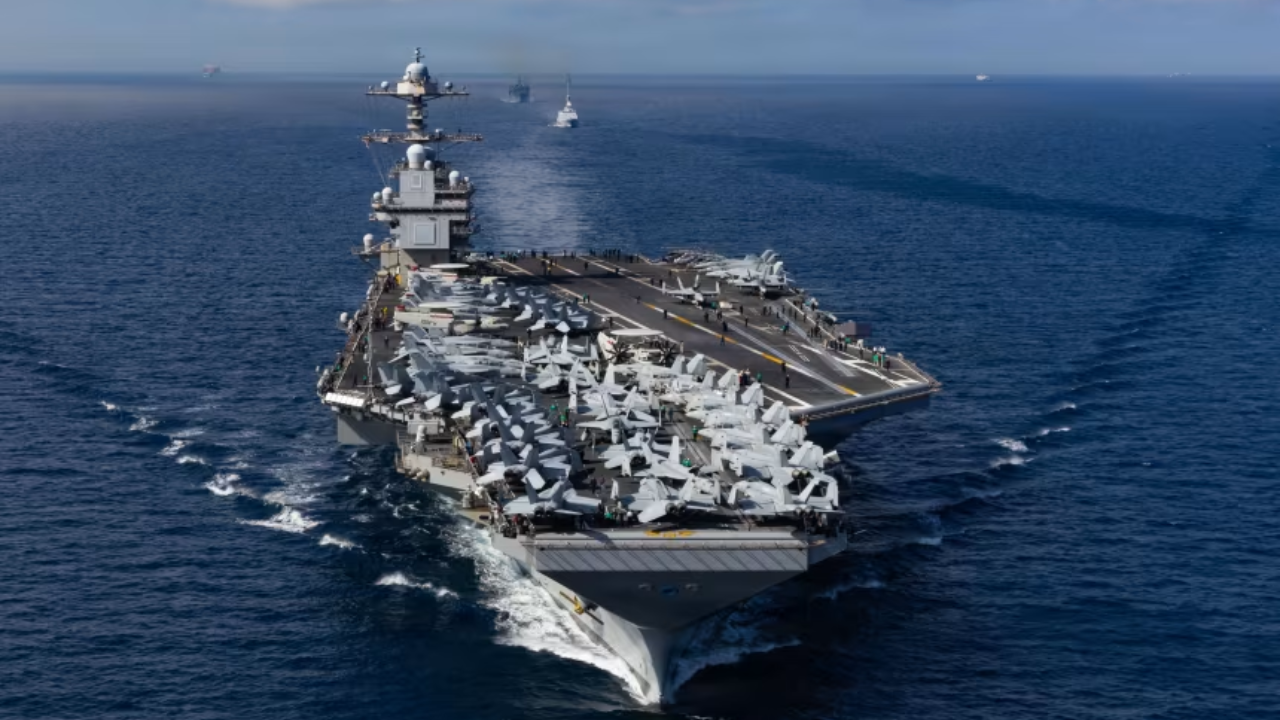The US Navy is deploying its newest and most advanced aircraft carrier, the USS Gerald R. Ford, to the Caribbean. The move signals a major escalation of military pressure by the Trump administration on Venezuela over alleged drug trafficking. The Navy calls the Ford “the most capable, adaptable, and lethal combat platform in the world.”
Here is a closer look at the power and technology the Ford brings to US operations in the region.
The Most Advanced Warship
The Gerald R. Ford is the largest warship the US has ever built, displacing over 100,000 tons and measuring 1,100 feet long. It’s the lead ship of its class and the successor to the Nimitz-class carriers.
Its immense capabilities stem from advanced technology:
- Nuclear Power: Its two nuclear reactors generate three times the electrical power of those on the older Nimitz class.
- Reduced Crew: Efficient, high-tech systems allow the ship to operate with a crew of almost 4,600, which is about 20% fewer personnel than a Nimitz carrier.
Revolutionary Launch and Recovery Systems
The Ford‘s extra power enables cutting-edge electromagnetic systems that drastically improve its ability to launch and recover aircraft:
- EMALS (Electromagnetic Aircraft Launch System): Instead of steam, this system uses magnets to power the ship’s catapults. This enables faster launches for aircraft carrying more fuel and heavier weapons, dramatically increasing the range and lethality of its jets.
- Advanced Weapons Elevators: Eleven electromagnetic elevators replace traditional hydraulics, moving munitions from the magazines to the flight deck much faster.
- Advanced Arresting Gear: This digitally controlled system catches landing aircraft with wires, boosting the ship’s sortie rate (the number of missions it can fly) while consuming less energy.
With a flight deck that is four feet wider and an “island” (superstructure) that is smaller and set farther back, the Ford also offers easier aircraft handling than its predecessors.
Air Power and Readiness
The primary striking power of the Ford is delivered by its F/A-18 fighter jets. These twin-engine Boeing aircraft are capable of deploying a full range of air-to-air, air-to-ground, and anti-ship missiles, as well as laser-guided bombs, with a maximum combat range of 1,250 miles.
The air wing also includes electronic-jamming aircraft, airborne early warning and control planes, and a variety of cargo and passenger planes and helicopters. Notably, the ship will not carry the Navy’s newest stealth jet, the F-35C, as modifications to support it are pending a future maintenance period.
Despite being commissioned in 2017, the Ford faced delays working out kinks in its advanced systems, only making its first full deployment in 2022. It conducted its first combat deployment in 2023, a cruise that included time in the eastern Mediterranean following the October 7 attack on Israel.
















